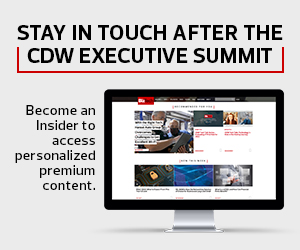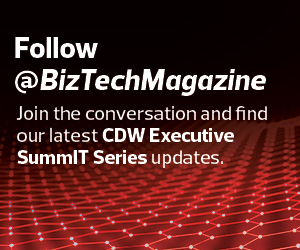Hiring For IT Positions Has Become Increasingly Competitive
As the trio examined the ways in which the workforce continues to change, McRaith noted that competition for attracting candidates and hiring employees has become increasingly stiff.
“Competition for talent is incredibly intense,” she said. “For one thing, you are facing a record number of roles posted, particularly for technology roles. And then we have 1 million women missing from the workforce today. We also had the ‘Great Resignation.’” All of these factors have combined to create a hypercompetitive hiring situation for organizations seeking highly skilled IT professionals, she said.
“We think about the specialists or specific skills, but employers across industries and across geographies are having to dig deeper to hire and retain talent,” McRaith said.
READ MORE: Find out what IT leaders can do to embrace hybrid work.
Employee Expectations Have Shifted in Recent Years
Another factor affecting the recruiting and hiring process is a distinct change in the expectations of candidates applying for jobs. “You think about your employee value proposition and how we speak to our candidates through this employee value proposition. We’re seeing companies having to rejigger or reshape that, knowing that three things are really, really critical for candidates and for your employees today.”
The first expectation McRaith listed was flexibility. “Flexibility is absolutely a must-have. We should think about it in terms of radical flexibility.” Prior to the pandemic, many employers were focused on where their employees were working, and for most of them, that was in the office. “But now we’re really going to look at three things: what they work on, who they work with and how much they work. Those are the things that candidates are really questioning as they go for jobs.”
McRaith also pointed out that employees expect their employers to care about their emotional and mental well-being in ways they didn’t before the pandemic. Candidates and employees now expect employers to be concerned about their well-being in three categories: emotional and mental well-being, financial well-being and physical well-being.
EXPLORE: See how employee expectations continue to evolve.
Financial Well-Being Requires Employee Development
Avery, director of business development at Focal Point, pointed to the difficulty many organizations are currently having with filling skilled IT positions. According to Avery, the industry is only filling 66% of open jobs.
One possible solution is internal development, Avery said. “We need to be thinking about all these jobs. We need to develop our people to build their next role here. What you have on hand today is your leadership of next year, because your next line up in security operations center management is your next network admin turning into your next network manager. That final thinking is the only way to really combat this, because it's only getting worse.”
“These numbers demand new answers, and those answers are really about building your own resources from the ground up,” he continued. “Once you have them, show them that they matter. Develop them. Maybe it’s not linear, maybe it’s not the exact next job on your org chart, maybe it’s over here somewhere.” Avery said that building skills through internal development will provide results faster than the hiring market can provide skilled outside candidates.
Pavliv, senior solutions architect at Focal Point, pointed to other problems going on in IT and cybersecurity employment. “Specifically, a lack of diversity is a really big problem right now,” he said. “When we talk about a lack of diversity, it’s not just race, gender, ethnicity; it’s a lack of diversity of experience, diversity of talent. All of those things are paramount to building a team that can think creatively and solve future challenges.”
Keep this page bookmarked for articles and videos from the event, follow us on Twitter @BizTechMagazine and participate in the official event conversation on Twitter at #JoinCDW.













